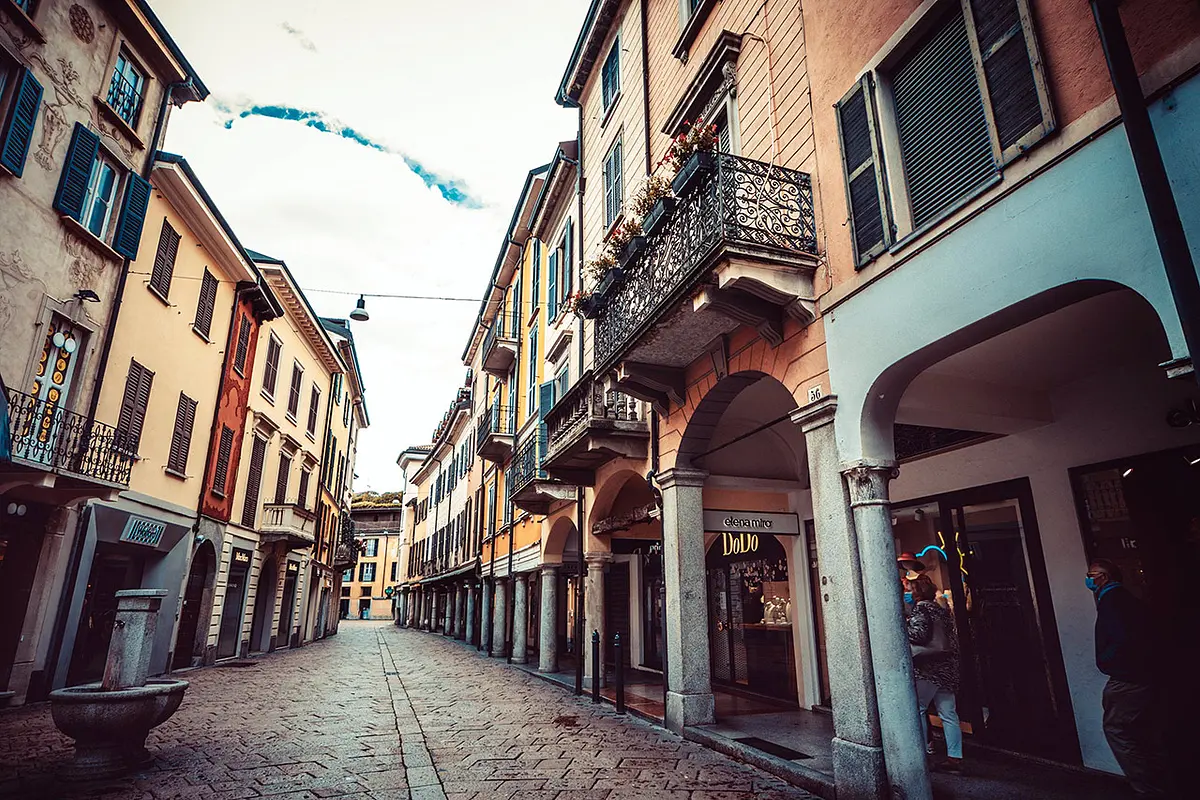















The ancient village of Varese
A Garden City rich in stories, art and emotions


Where

What it is and where it is
Varese is not a usual city: an ancient borgo, castellanze and former municipalities coexist there. The borgo is the authentic heart of the Varese that once was: a crossroads of peoples, trade and art. It is crisscrossed by Corso Matteotti, an elegant arcaded street on which the Arco Mera opens, the meeting point between the squares of the Podestà with the old town hall and San Vittore with the Basilica, the Bernascone Bell Tower and the Romanesque Baptistery. Getting lost with a curious eye among courtyards, ancient monasteries, palaces, streets and avenues is a rule because Varese is reserved and reveals itself only to the patient and curious guest to discover it.
Why it is special
It presents itself as an encounter/clash between the ancient and the need for solemn spaces designed by the rationalism of the 1930s. Ancient houses, palaces and frescoes dialogue with pure geometries and cold materials in the search for solids and voids, light and shadow, austerity and rigor that bring to mind De Chirico's metaphysical Invisible Cities. This double face, created to elevate the new capital city in importance, is now a cause for criticism or impassioned declarations but, as always, it is up to the observer to grasp the meaning and beauty, even melancholy, of the passage of history.
Not to be missed
The best place to take a break are the Gardens of Palazzo Estense, now the town hall and 18th-century villa of delight of Francesco III d'Este. Modeled after Schönbrunn, they hold an enchanting Italianate garden with French influences, and from the hill there is one of the best views of the city. Leopardi called them the Little Versailles of Milan, an expression that reflects on the city and its history as a holiday destination. Attached is the English-style park of Villa Mirabello, with the centuries-old Cedar of Lebanon and the Villa that now houses the Civic Archaeological Museum.
A bit of history
Varese was a Gallic village, a Roman castrum and a mercantile suburb; it participated, while maintaining its autonomy, in the events of Seprio and the struggles between Milan and Como. In 1765 Maria Theresa of Austria gave it as a fief to Francesco III d'Este, giving it a happy and prosperous period. In 1816 it was elevated to the rank of City, and in 1861 it was the first to request, by plebiscite, annexation to the Kingdom of Sardinia. Between the nineteenth and twentieth centuries it became a tourist destination famous throughout Europe, whose prosperity led to orderly development, recognition as a Garden City, and in 1927 the establishment of the Province.
Curiosities
Varese, with its 6 public parks, dozens of villas and green spaces that draw its shape framed by the Campo dei Fiori, the Pre-Alps and the Lake, is known as a Garden City: a combination of art and nature that describes the soul of the city. The Estensi Gardens and Mirabello Park are the example and starting point of the villa civilization that made Varese a coveted center of noble vacationing and then, for decades, the capital of tourism. Its history is also intertwined with the water of the lakes that surround it: the Celtic root "var" or "vara" refers to a territory rich in water.
Enter the Map of Italy's Undiscovered Wonders and find treasures where you least expect it... Inspire, Recommend, Share...
The Map thanks:
In the Community
Enter the Map of Italy's Undiscovered Wonders and find treasures where you least expect it... Inspire, Recommend, Share...
Where


